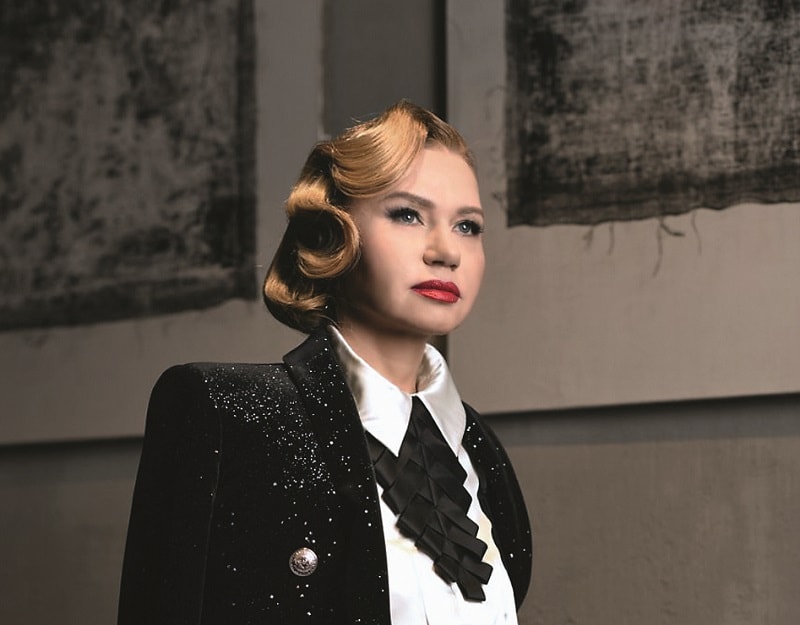Elena Shlenkina: “A sense of proportion is in fashion”
Why did you enter this industry 25 years ago? Why did you choose Italy?
A little bit, probably, by accident, but if you think about it, it’s quite natural. Every woman is interested in the interior theme intuitively, genetically, the mission of the keeper of the hearth is in her DNA. In my case, this interest was perhaps a little deeper than average. I have been in love with the nature, people, and culture of Italy since my youth through books and pictures (who isn’t?), and my acquaintance with the art of Italian furniture makers during one of my trips to the country turned out to be a matter of chance – and a powerful impulse to change my destiny. The result is a passion that has become the work of life.
Was your previous profession related to design and interior design? How did you learn to navigate this area?
There was no connection, at least no obvious one. By education and first experience I am a mechanical engineer. And I learned, like everyone else, from my mistakes, which, fortunately, were very few: that same intuition helped a lot. There were also endless trips to factories, exhibitions, negotiations, studying analytics and – yes, the Italian language, without it there is nowhere in our business.
How do you think the tastes of Russians have changed? What was in demand in the first years of your work with Italian manufacturers?
I’ll say radically: Russians (consumers, not professionals) simply did not have interior taste 25–30 years ago; there was nowhere for it to come from. The mass of people lacked discernment, as well as the ability to foresee their own aesthetic development. So it is not surprising that with the advent of new opportunities, a stream of second-rate (and not necessarily cheap) pseudo-classical furniture poured into the country: it’s beautiful, everything glitters, curls… Real furniture from famous designers and brands also appeared, although it was not easy to distinguish it in this stream. But we are smart people, we learn quickly and by the beginning of the 2000s we had learned to distinguish real Italian (and more broadly European) furniture from husk.
What trends are you seeing now? What’s in fashion: classics, hi-tech, minimalism? Should we combine elements of these styles or, conversely, maintain the “purity of the genre”?
I am glad that literate consumers, and even more so their assistants, interior designers, no longer think in isolated categories. Styles are not hermetic, they are characterized by harmonious and smooth interpenetration: modernized classics without pretentiousness; “humanized” minimalism with near-baroque inclusions; high-tech with individual smooth, sensual forms and bright realistic accents… And in fashion there is always a sense of proportion, it will always help out.
What materials are most in demand today?
And today, and always – of course, natural, moreover – natural. Where the aesthetics, design and functional purpose of the product allow, furniture makers try to preserve and even emphasize the natural properties of the material as much as possible: the living texture of wood, the natural pattern of stone, the friendly organoleptic properties of fabric. Another thing is that, due to operating conditions, it is impossible to do without artificial materials, but only to the minimum necessary extent.
How would you characterize Italian furniture in general? Why should she be preferred?
In two words, and in the most versatile sense: ingenuity and aesthetics. And preference should be given to the furniture that you like, no matter where it was made. Another thing is that the Italian interior market offers, in my opinion, solutions for every taste.
What interior style do you like?
The same eclectic one we already talked about, with elements of restrained classics and soft modernity. You don’t get tired of it visually, it’s cozy. There must be objects of art: paintings, panels, vases. A lot of different light.
You’ve probably traveled all over Italy. What are your favorite places? Where would you advise those who have already “been everywhere” to go?
I didn’t meet people who were literally everywhere. And I could advise (and this applies not only to Italy) to take a step to the side, away from the beaten paths, resorts, tourist attractions – into the outback, where you can only reach by car, to small towns and even villages where the smell of feather grass and mint smells , pine needles, sun-warmed rocks and where people have not yet forgotten how to live, work, have fun, eat, communicate and love in simplicity.
